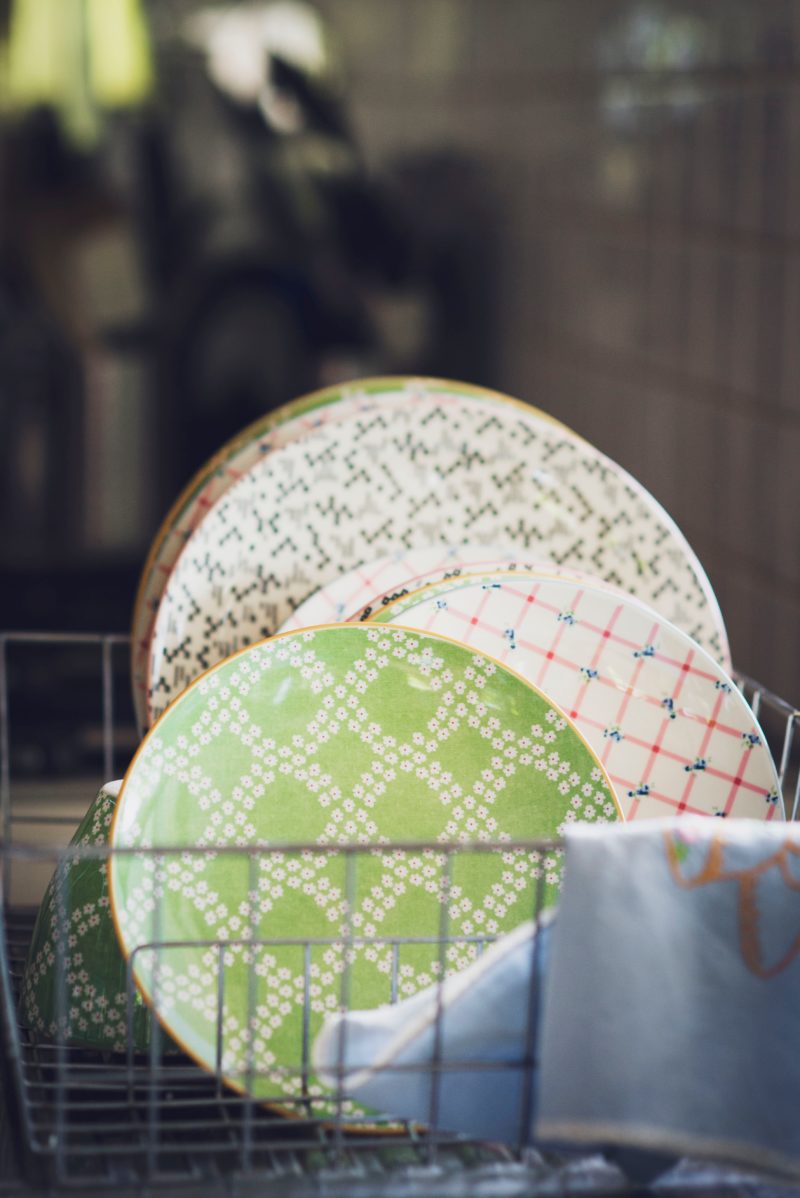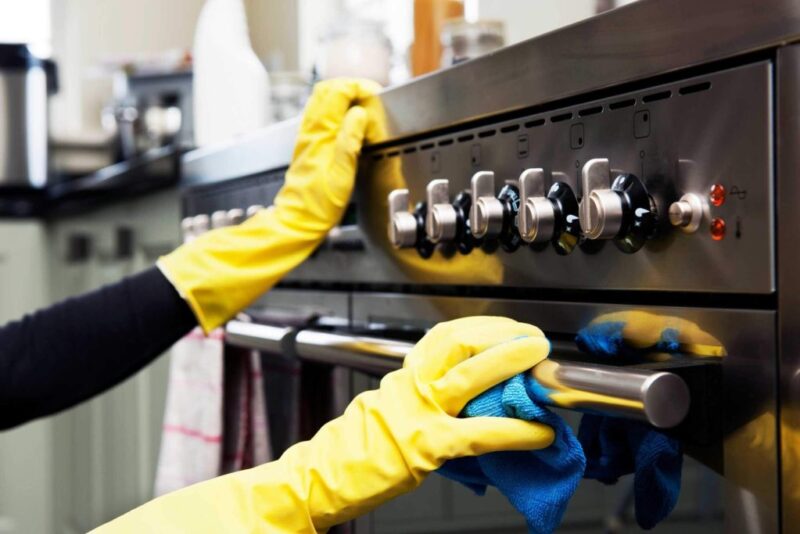How To Clean Walls

Wall cleaning may not be something that we spend a great deal of time contemplating — or doing — but there can be little doubt that clean walls can go a long way to freshening a previously dull-looking room. And, having a regular wall cleaning routine can help to make the chore a little easier!
The method for cleaning walls largely depends on the type of wall and how dirty or stained they are. Yet most wall cleaning tasks can generally be tackled with warm water, liquid dish detergent, a sponge or microfibre cloth and bicarb soda or sugar soap. Now, let’s take a look at exactly how to clean walls.
How often should I clean my walls?
The first step in how to clean walls is knowing how often they should be cleaned. Here’s a quick guide:
- Immediate — Stains and splatters should be cleaned soon after they occur.
- Weekly — Clean the walls surrounding your shower area, as well as the area around door handles and light switches.
- Monthly — A thorough or deep clean of walls and skirting boards should be done per month. Always ensure to dust your walls before cleaning them, so that you’re not wiping dust and dirt further into the walls.
How to clean painted walls
Before you embark on cleaning your painted walls, you need to consider the type of paint on the wall — this will ultimately affect how you go about cleaning them.
Cleaning glossy painted walls
Gloss paints are reasonably durable but can be vulnerable to scratching if harsh cleaning tools are used. To clean these walls, you’ll need warm water, liquid dish detergent, a microfibre cloth and a sponge.
Mix the water with a few drops of the detergent. Wet the sponge in the mix, then wring until nearly dry. Next, gently wipe the walls with the sponge, then dry with the microfibre cloth.
Cleaning flat-painted walls
Flat and satin paints aren’t as hard-wearing as gloss paints. Therefore, avoid degreasers and chemicals, and be sure to clean gently. You’ll need warm water, a sponge and a microfibre cloth.
Simply wet the sponge and wring until nearly dry. Then proceed to wipe the walls, ensuring to rinse and wring the sponge as it becomes dirty. Lastly, dry the walls with the microfibre cloth.
Cleaning water-based painted walls
Water-based (or latex) paints are reasonably durable, so non-abrasive multi-purpose cleaners are fine to use. Mix the cleaner with warm water before wiping the walls with a clean sponge and the solution.
Cleaning oil-based painted walls
For best results when cleaning oil-based painted walls, you’ll need warm water, liquid dish detergent, a sponge, a microfibre cloth and white vinegar. Mix one teaspoon of detergent with a quarter teaspoon of vinegar and one litre of warm water. Wet the sponge with the solution, then use this to wipe the walls, before drying with a microfibre cloth. For stained areas, simply leave the mixture on the wall for 10 minutes before wiping.
The best way to clean white walls
White walls may need to be cleaned, or at least dusted, a little more frequently to keep them looking at their brightest. White wall cleaning options include:
- A simple wipe with water and liquid dish detergent
- A quick refresh with an all-purpose cleaner
- Applying a paste of water and bicarb soda, then wiping with a damp sponge
How to clean other common wall surfaces
Painted walls aren’t the only type of walls! Here’s how to clean a range of other common wall materials:
Cleaning stone walls
When cleaning natural stones such as sandstone, granite or limestone, it’s important to steer clear of acid-based products such as vinegar. Use mild dish detergent or stone soap instead. Simply add a few drops of the detergent to some warm water, dip a soft cloth or sponge into the water and gently wipe the stone wall clean. Ensure to dry immediately after cleaning.
Cleaning wall-papered walls
Extra care should be taken when cleaning papered walls to prevent damage to the finish. Avoid coarse cloths as well as abrasive cleaners. Generally speaking, papered walls need no more than a simple dust to keep them clean. For smudges or scuff marks, a dry cleaning sponge or gum eraser can be used. Just ensure to be gentle!
Cleaning tile walls
For porcelain and ceramic tiles, fill a spray bottle with one litre of water and half a cup of vinegar. Spray onto the tiles, then wipe with a soft, damp cloth. Marble tiles can simply be cleaned with warm water (and dish detergent if needed) and a microfibre cloth.
Cleaning brick walls
For brick walls, mix equal parts vinegar and water in a spray bottle, let the solution sit on the wall for a few minutes, then clean with a sponge mop. For heavy scuffs, you may want to use a soft scrub brush. Another option is to combine 2 to 3 tablespoons of dish detergent with a half cup of bicarb soda, spread across the bricks and allow to sit for 5 to 10 minutes before scrubbing off. A damp cloth can be used to clean any residue.
How to clean walls with stubborn stains
Dealing with stubborn stains? Make a simple paste of ¼ cup of bicarb soda and one tablespoon of water. Gently rub the paste onto the stain with a clean cloth using circular motions, before using some warm water or a damp cloth to rinse the residue. Alternatively, diluted white vinegar or sugar soap or even a rag dipped in rubbing alcohol can be used.
How to clean grease stains from walls
To cut through grease and grime on painted or tiled walls, simply mix equal parts lemon juice or white vinegar with water. Spray the solution onto the stained area, then gently clean using a soft sponge. The acidic properties of each of these substances mean that they are able to quickly and easily penetrate grease and grime. Diluted sugar soap can also be effective at cleaning grease stains from walls.
How to clean mould from walls
Mould and mildew are both potential health hazards in the home — for this reason, any sign of either should be dealt with as soon as possible. Before removing the mould, it’s important to assess the level of damage. How deep has the mould grown?
If there is structural damage to the walls, you’ll need to obtain the advice of construction professionals, who may recommend removing and replacing the walls in order to eliminate the mould at the source. If the walls are still intact, then you can go ahead and remove the mould spots yourself.
White vinegar and bleach are both effective for cleaning mould — you may prefer to try vinegar first, as it is the less harsh option. Simply spray undiluted mild white vinegar on the wall, allow to sit for 30 minutes, then wipe clean with a cloth and water.
To clean with bleach, combine one part bleach with three parts water, and apply to the wall with a sponge or rag. Be sure to wear protective gloves!
Jim’s Cleaning — your local cleaning experts
Looking for a helping hand to tackle your pesky wall cleaning jobs? Look no further than the expert team at Jim’s Cleaning. As a leading and trusted name throughout Australia, we provide a range of professional and affordable cleaning services, all designed to transform your home or office space.
As experts in their fields, all of our team are fully qualified and insured and hold current police checks. With us, you can be sure that you’re getting the best service ever. Get in touch to arrange a free quote for your next cleaning job today!



